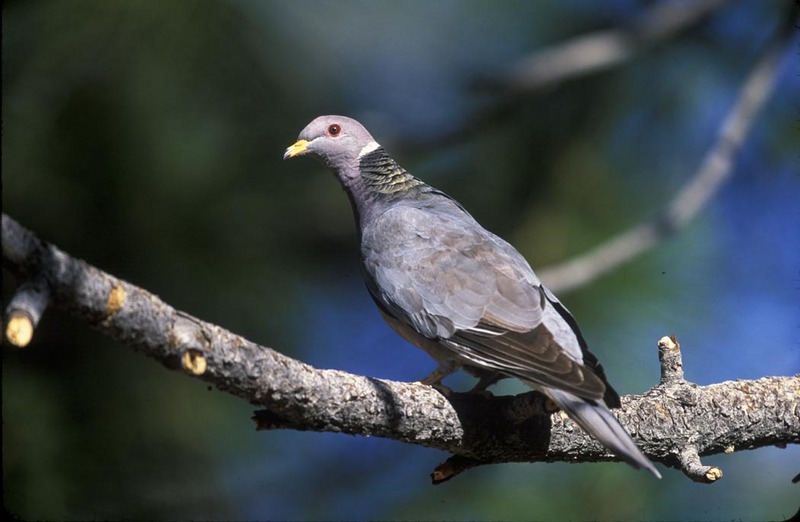Band-tailed Pigeon
From Wikipedia, the free encyclopedia
[Photo] Band-tailed Pigeon (Columba fasciata --> Patagioenas fasciata); Creator: Gary Kramer; Source: US Fish and Wildlife Service
The Band-tailed Pigeon, Patagioenas fasciata, is a medium-sized bird of the Americas. Its closest relatives are the Chilean Pigeon and the Ring-tailed Pigeon, which form a clade of Patagioenas with a terminal tail band and iridescent plumage on their necks.(Johnson et al., 2001)
It ranges from British Columbia, Utah, and Colorado south in higher elevations through Mexico and Central America to northern Argentina. In autumn it migrates out of the part of its range north of California, New Mexico, and west Texas. Populations from Costa Rica south are sometimes considered a separate species, the White-naped Pigeon, C. albilinea. It is found at altitudes from 900 m to 3600 m, generally in oak, pine-oak, and coniferous forests. It feeds on seeds, notably acorns.
It is the biggest pigeon in North America, averaging 34 to 36 cm (14???15 in) long and weighing 250???450 g. The plumage is gray, somewhat darker above. The head and underparts have a faint pink cast, especially in the adult male; the belly is nearly white. The distal half of the tail is also pale (except in the subspecies of Baja California), whence the English name. The bill and feet are yellow, good identification marks at sufficiently close range. Adults have green iridescence on the back of the neck, adjacent to a thin white collar on the nape. Juvenile birds have white feather edges above, giving a scaly appearance.
This species is relatively quiet for a pigeon. Its voice is low-pitched and owl-like, often in two-syllable calls that rise and then fall (huu-ooh) with even spacing between calls (Mahler & Tubaro 2001).
It builds a rudimentary platform nest out of twigs, in which it lays one or two eggs. Outside the breeding season it forms flocks, sometimes over 50 birds, and often becomes nomadic, following the acorn crop or moving to lower altitudes or other areas outside its breeding range. It often visits bird feeders.
The parasitic louse Columbicola extinctus, believed to have become extinct with the extinction of the Passenger Pigeon, was recently rediscovered on the Band-tailed Pigeon.
http://en.wikipedia.org/wiki/Band-tailed_Pigeon
| The text in this page is based on the copyrighted Wikipedia article shown in above URL. It is used under the GNU Free Documentation License. You may redistribute it, verbatim or modified, providing that you comply with the terms of the GFDL. |
|

